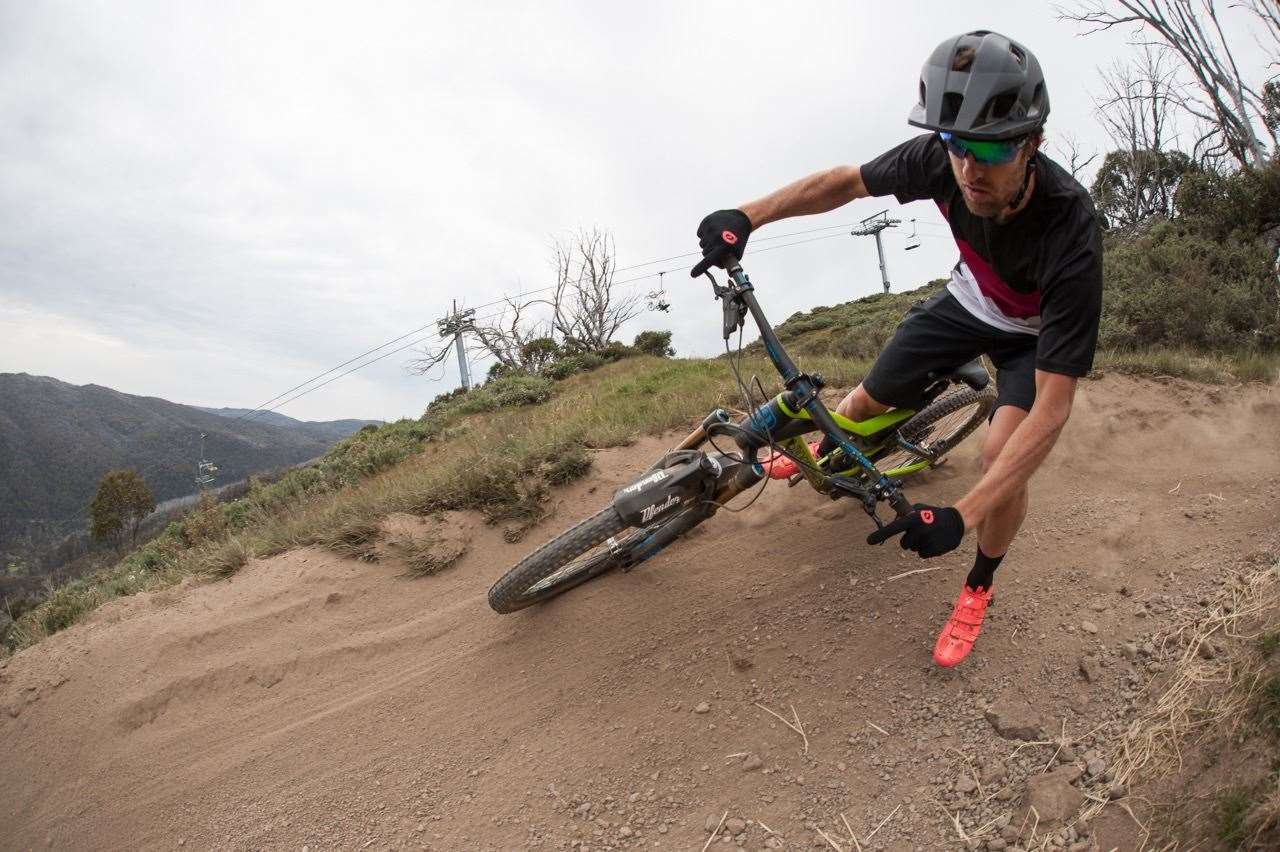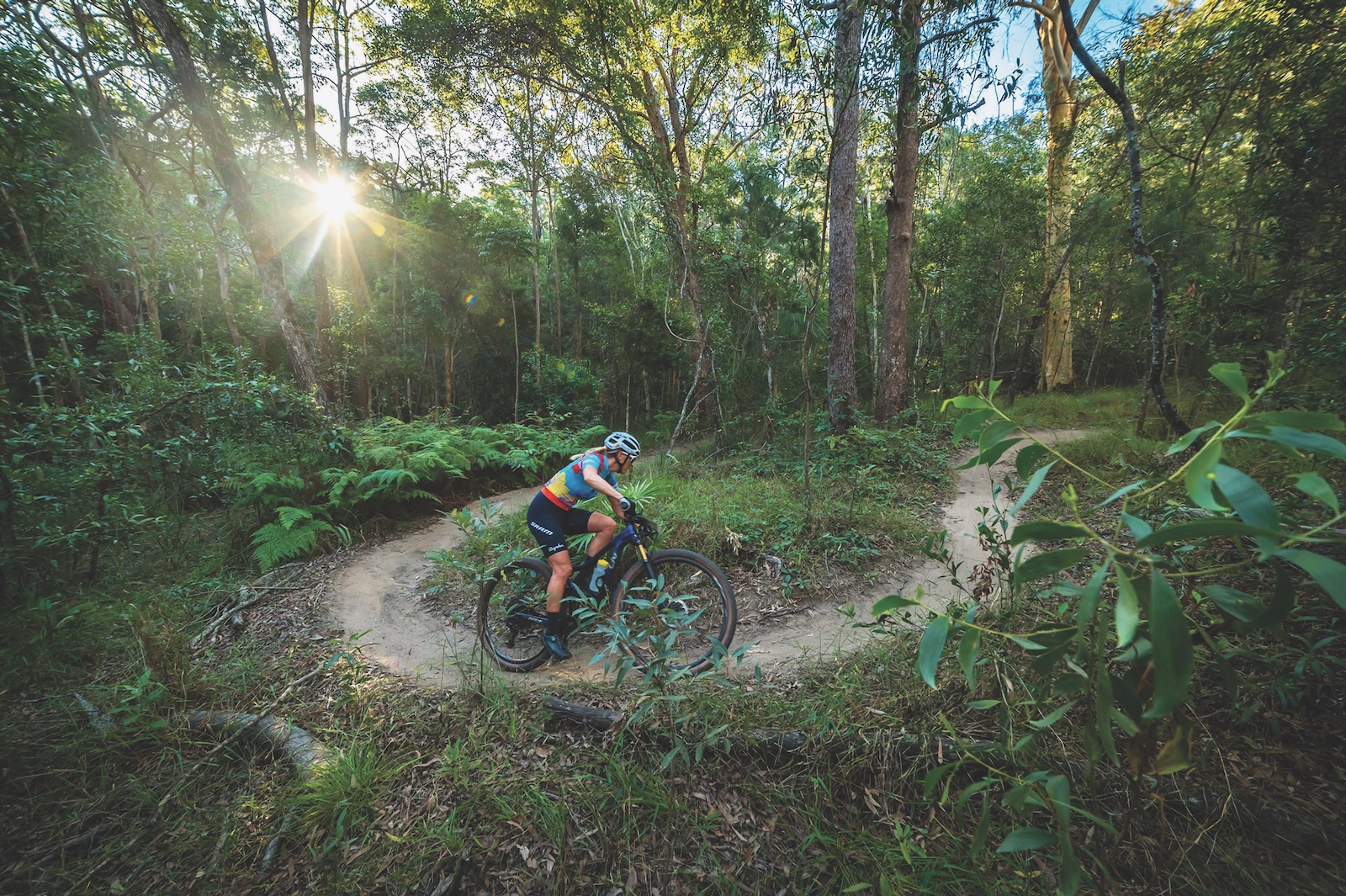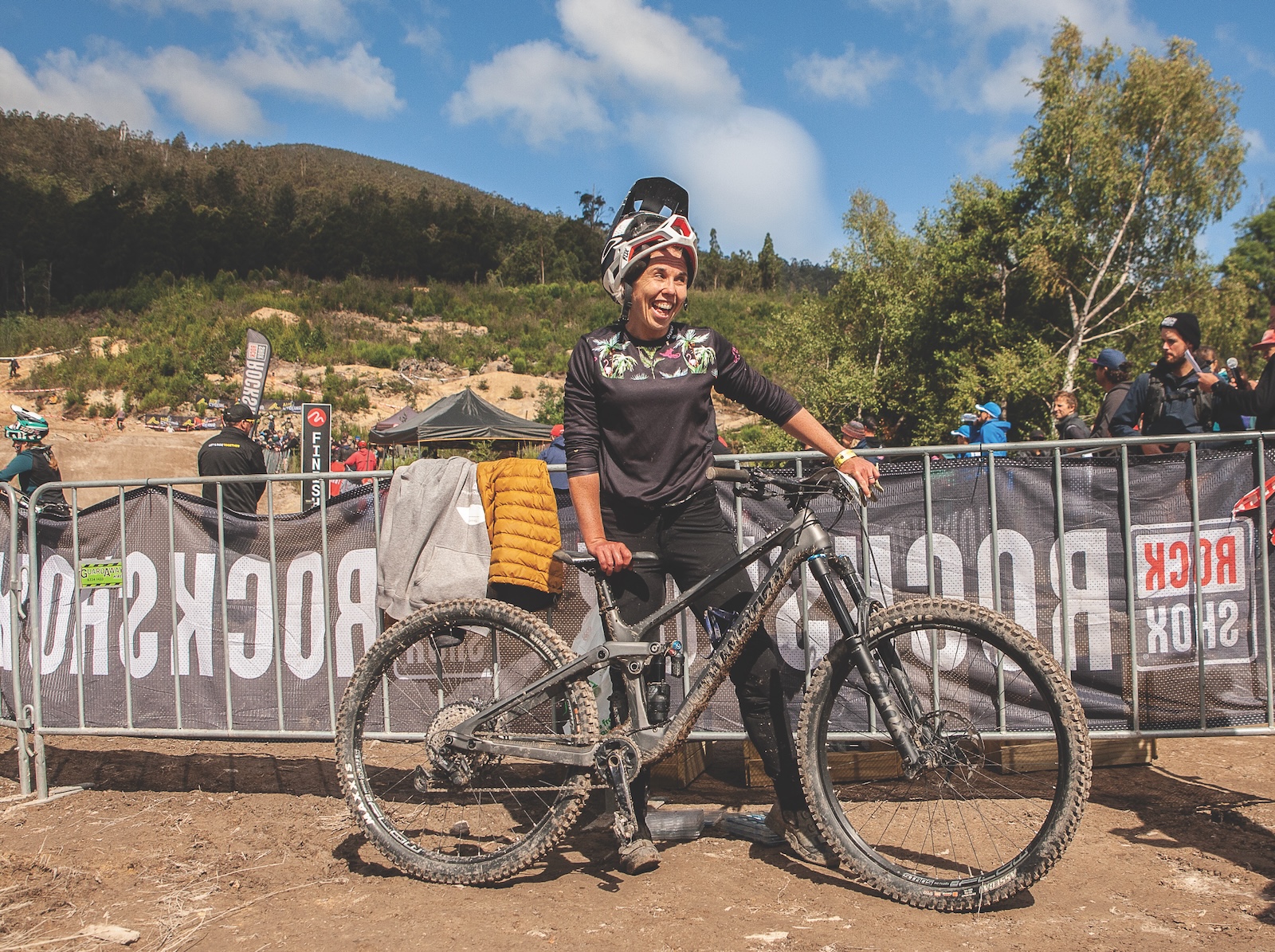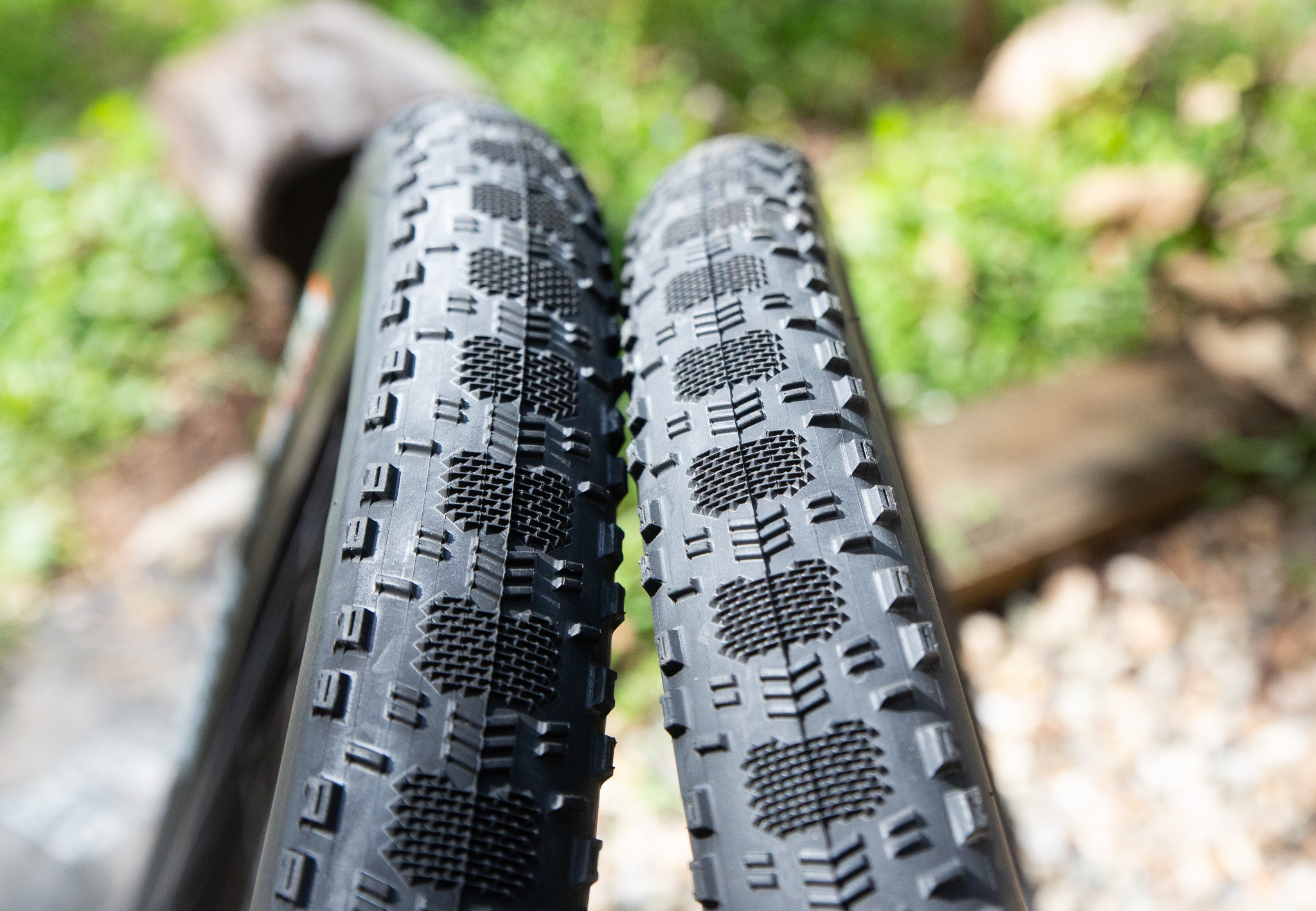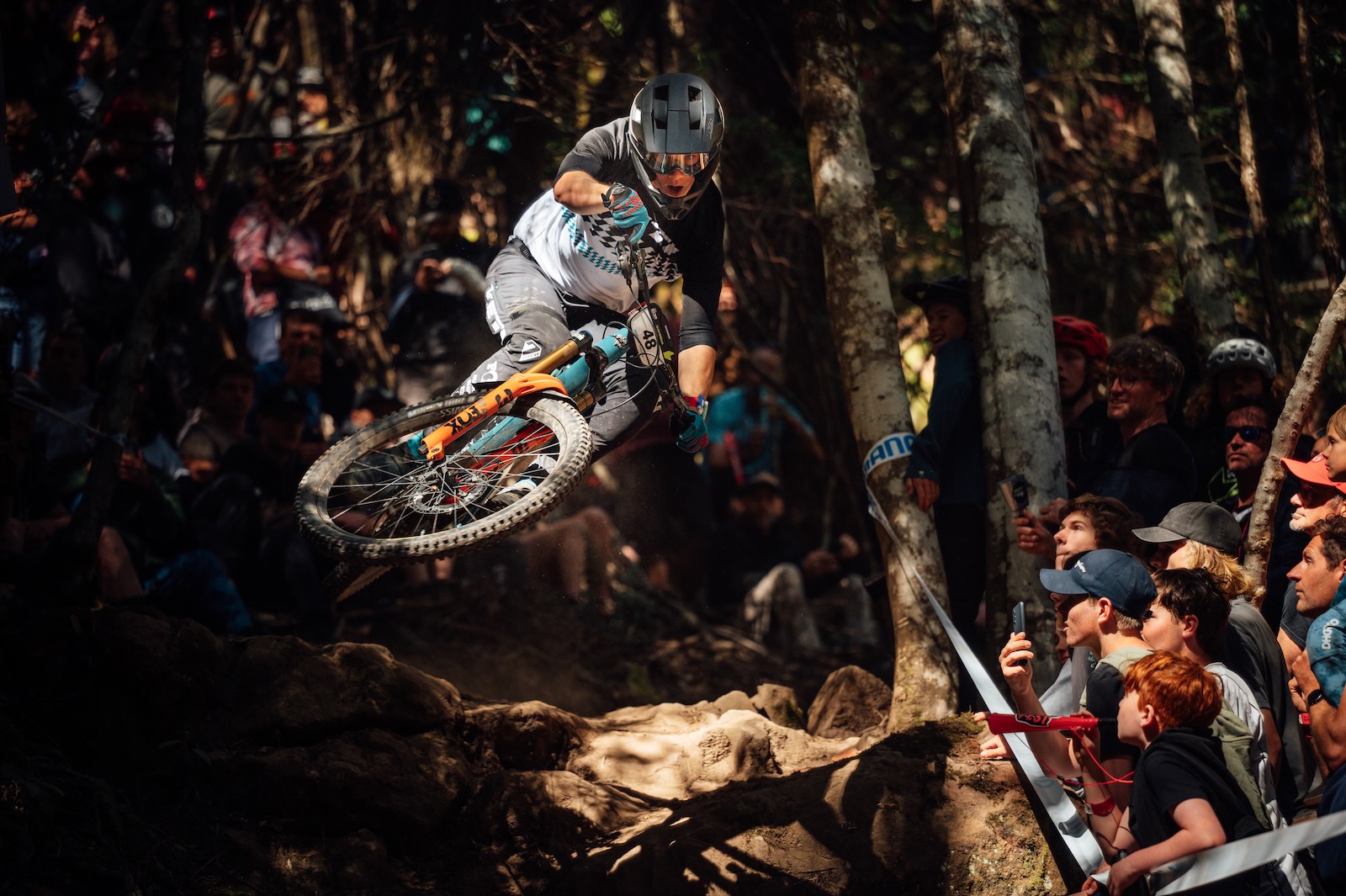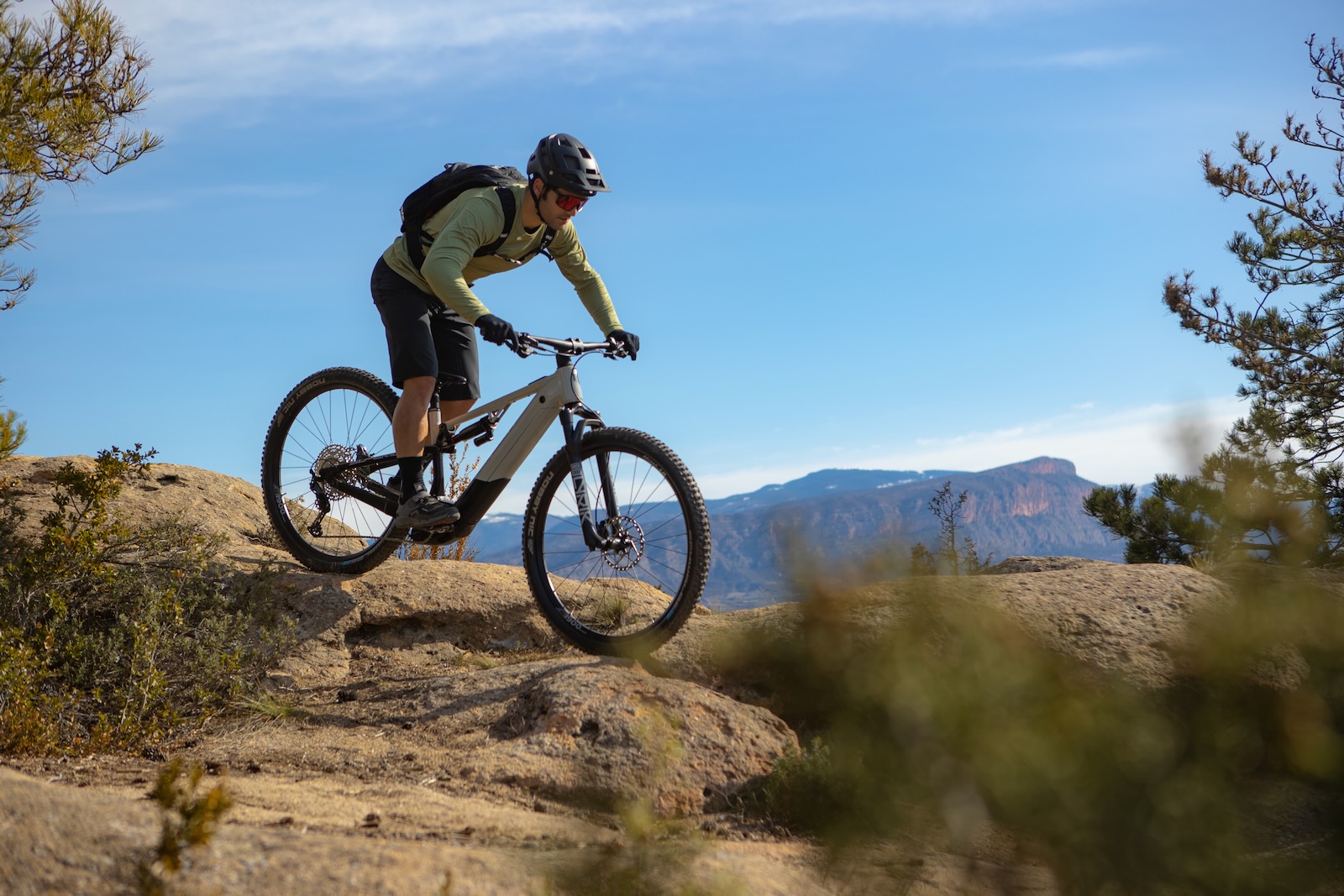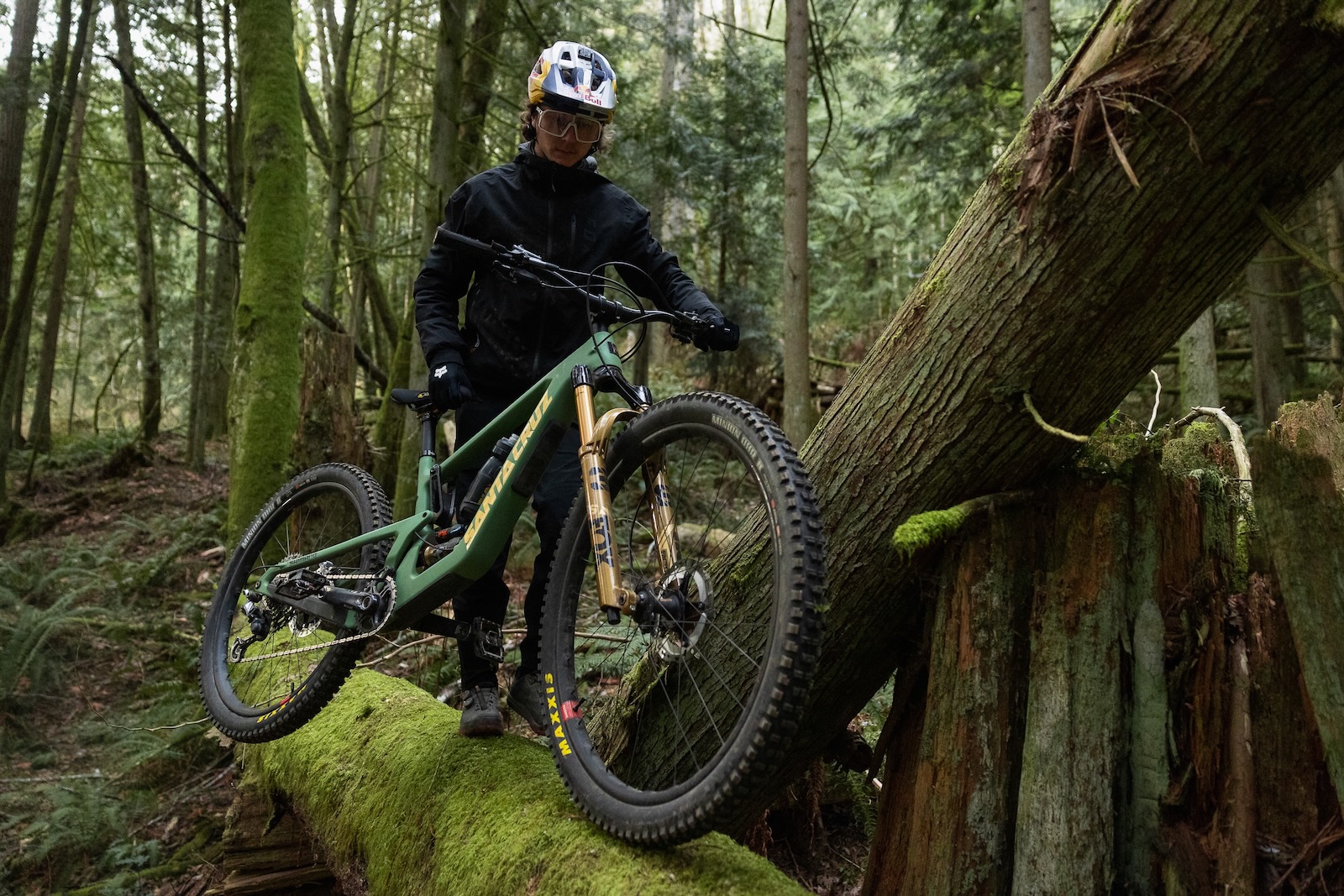TESTED: Mondraker Dune RR
All photos by Robert Conroy
All photos by Robert Conroy
Mondraker have been around the downhill scene for a long time now. With their first downhill bikes being tested and developed by the likes of Fabian Barel their bikes have their own style. The Mondraker Dune is a bike that has come directly from those years of R & D, and it shows. The Dune has 6 models in total, 3 carbon and 3 alloy. The Dune RR sits in the middle of the 3 carbon models.
Having been in the downhill scene most of my life I have seen the Mondraker brand come a long way with their development. I have always been interested in the short stem and long cockpit that the Mondrakers employ with Forward Geometry, so I was keen on getting a chance to test this bike.
Initial thoughts on the Mondraker Dune
Initially the thing I was interested in was the geometry. Straight away I went about finding out what the philosophy with the geometry was to see if it matched up with what I experienced on the trail. This was quickly overtaken by the look and feel of the Dune. The bike looks aggressive, with a short stem, wide bars, a big fat rear end that looks like it will eat anything on the trail. The Maxxis High Roller II’s and the mud guard on the bike made it look like it would be fast down hill and I was keen to find out.
The other thing that struck me first was the workmanship of the full carbon frame and spec of the Dune. Carbon frames usually lend themselves to looking really smooth and sleek but the Dune is very intricate in its design yet still creates a smooth, sleek feel. Combined with the great colour ways available, the first impressions are stunning.
The Dune RR is loaded with all the parts you want on an enduro bike these days, the spec definitely did not let the bike down. With Fox 36 27.5 Float Forks with Fox Float X Shock to soak up the bumps you know it will be up to the challenge, and just about any suspension tune preferences. The Dune is loaded from head to toe, From SRAM Guide brakes, SRAM XO1 rear derailleur and X1 Shifter, a Reverb Stealth Seatpost, and the DT Swiss wheels. Good parts don’t make a great riding bike – but they help.
Getting on the Dune RR
Getting on the bike for the first time was a little different with the front wheel seeming to be so far away but still strangely comfortable. I could tell straight away this was to do with the geometry. Mondraker call this their Forward Geometry. This was what I was looking forward to the most about this bike – finding out what it was all about. Forward Geometry makes the top tube longer than normal which is made up for with a shorter stem. This lengthens the whole bike while keeping the bars in the same place. It also moves the rider’s weight further behind the front axle. Effectively what this does is give you a more neutral position on the bike forward or backward. So you don’t have to get right over the back of the bike when descending and don’t have to get right over the front of the bike when climbing.
Being around 182cm tall I tested a large Dune. This size was perfect for me. The bar size and stem that the bike comes with feel perfect. Being 780mm wide there is plenty of room for cutting a little off the ends if you need to. I have always been a fan of a little bit of rise on bars so this is something I would probably change but that being said the bars felt good anyway.
One of the best features of the Dune Carbon frames is the internal cable routing. This is a pretty standard thing on most bikes these days but Mondraker have done a great job designing this into their frame. It may sound like such a small thing but internal cable routing plays a huge roll in keeping your bike quiet on the trail and looking good.
Taking the Mondraker Dune to the trail
I spent most of the time riding this Dune on mostly gravity fed trails. The big Maxxis High Roller II tyres and long travel just lent itself to going downhill fast. The most impressive thing with the Dune was its ability around long fast corners. I could literally go as fast as I could in long fast corners and it just came out the other side faster. The stability of the Forward Geometry and the longer wheelbase were the big players here. The faster you could go the more fun the corners were. That being said this was also a bit of downfall on some of the tighter corners. The longer wheelbase was a little noticeable in the tight corners but I think this would be fine with a little more time on the bike, you would get used to it.
The other big stand out was the rear suspension. Having a similar linkage to the big brother downhill bike you could tell the Dune wanted to take big hits. Rock gardens and large G outs were no problem for the Dune Carbon. It made the bike feel like a small downhill bike that could go uphills. This brings me the next point. The uphills. Having spent most of the time on this bike going downhill, I did want to give it a good test on an all mountain trail to see how it would perform on the climbs. Again the Forward Geometry is what gives the Dune the ability to get up hills well. Your weight is in a neutral position on the bike which just gives you the ability to focus on putting down the power and getting up and over thing rather than trying to keep the front wheel from going up the air. You have to remember it is still a big long travel bike but that being said it does climb well for what it is.
Our Take on the Dune
With all mountain and enduro bikes becoming more and more popular in the mountain bike world the Dune Carbon fits in right at the top of this pile. I feel like the Dune is the bike for someone who wants to do a local downhill club round one day and then the next day could go on a trail ride with a bunch of mates. As the Dune comes, it is ready to go for aggressive trail riding, some downhill and steep singletrack, but with a simple change of tyres the bike could easily be set up for some longer trail rides.
At $9307 the Dune is not going to be the cheapest in the market but with 6 models across the Dune range, including 3 alloy models there is something that would fit in with your price range.
If I was in the market for a 160mm travel bike the Mondraker Dune Carbon would be in my top 3 for sure. It’s fun to ride, gives you more back than you give it and you can throw anything at it. I think the Dune as a bike is a bit like a bottle of wine, it gets better after time. The more I rode the Dune, the more I liked it.
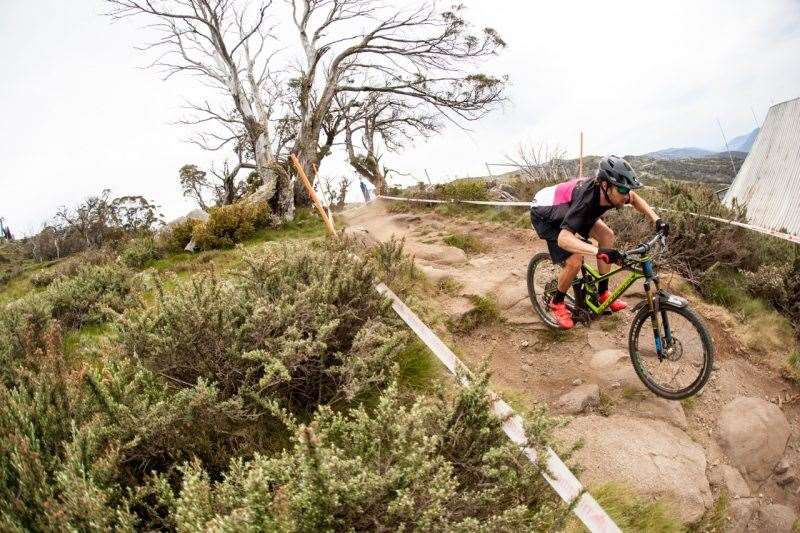
Essentials
Tester: Chris Barlin
Riding Experience: I have ridden Downhill for over 10years. Have raced all around the world and all around Australia. Have even done the odd XCO race and road race.
Generally Rides: Trek Superfly, Trek Top Fuel
Height: 182cm
Weight: 73Kg
Bike Test Track: Thredbo, Old Mans Valley, Cascades
Three things you liked about the bike:
- I loved the way the bike cornered. Long flat out corners the bike was stable and just carried its speed so easily.
- The rear of the bike felt like you could throw anything at it and it could handle it.
- The forward geometry made the bike stable and comfortable climbing and especially descending.
Three things you would change about the bike:
- The front chain ring size could be bigger.
- Choose handlebars to suit my preferences.
- The tyres are great for the downhill but too heavy for all-mountain riding.
Bike: Mondraker Dune Carbon RR
RRP $9307
WEIGHT 12.5kg (as tested)
CONTACT: contact@flowbikes.com.au
AVAILABLE SIZES: S, M, L (tested), XL
FRAME MATERIAL: Full Carbon
FORK: Fox 36 27.5 Float FIT4 Factory Kashima 160mm
SHOCK: Fox Float X LV EVOL Factory Kashima
SHIFTERS: SRAM X1 11s
DERAILLEUR: SRAM X01
CRANK: RaceFace Aeffect SL 34T
CHAIN: SRAM PCX1
CASSETTE: SRAM PG-1175 10-42T
WHEEL SET: DT Swiss E1700 Spline 15mm/ 142x12mm
TYRES: Maxxis High Roller II TLR Dual Exo 27´5×2.3
BRAKES: SRAM Guide RS
STEM: Onoff Stoic FG30 35mm Barbore
HANDLEBARS: Mondraker custom design 1″ 780mm
SEATPOST: RockShox Reverb Stealth 31.6mm
SADDLE: SDG Circuit MTN CR-MO

